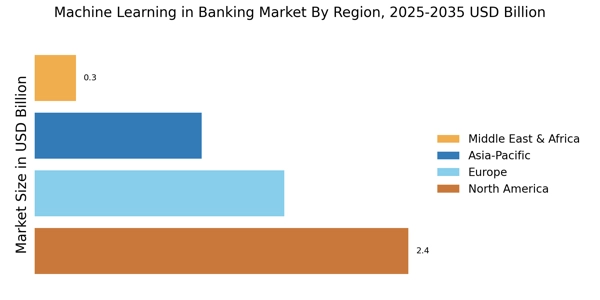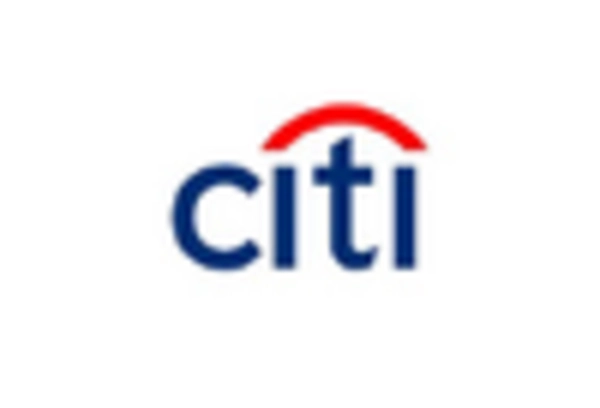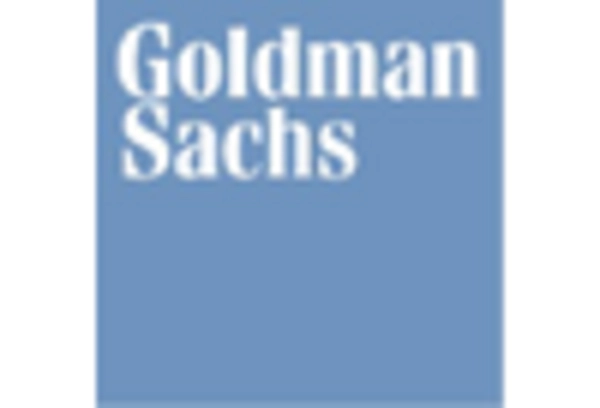Data-Driven Decision Making
In the Machine Learning in Banking Market, the shift towards data-driven decision making is a prominent driver. Financial institutions are increasingly recognizing the value of data analytics in shaping strategic decisions. Machine learning models can process and analyze large datasets, providing insights that inform lending practices, investment strategies, and customer engagement. The ability to leverage data for predictive analytics is transforming how banks operate, enabling them to respond swiftly to market changes. Reports indicate that organizations utilizing data-driven strategies are likely to outperform their competitors, highlighting the importance of machine learning in enhancing decision-making processes. This trend underscores the necessity for banks to invest in machine learning technologies to harness the full potential of their data.
Enhanced Customer Experience
The Machine Learning in Banking Market is significantly driven by the demand for enhanced customer experience. As competition intensifies, banks are focusing on delivering personalized services to retain customers. Machine learning algorithms can analyze customer behavior and preferences, allowing banks to tailor their offerings accordingly. This personalization extends to product recommendations, customer support, and targeted marketing campaigns. Data suggests that banks employing machine learning for customer engagement see higher satisfaction rates and increased loyalty. Furthermore, the ability to predict customer needs and proactively address them positions banks favorably in a crowded marketplace. As customer expectations evolve, the integration of machine learning becomes crucial for banks aiming to enhance their service delivery.
Fraud Detection and Prevention
Fraud detection and prevention remain paramount in the Machine Learning in Banking Market. As financial transactions become increasingly digital, the risk of fraud escalates. Machine learning algorithms are adept at identifying patterns and anomalies in transaction data, enabling banks to detect fraudulent activities in real-time. The implementation of machine learning for fraud detection has shown to reduce losses significantly, with some institutions reporting a decrease in fraud-related incidents. Furthermore, the ability to adapt and learn from new fraud tactics enhances the effectiveness of these systems. As cyber threats evolve, the reliance on machine learning for robust fraud prevention strategies is likely to grow, making it an essential component of modern banking operations.
Cost Efficiency and Resource Optimization
Cost efficiency and resource optimization are critical drivers in the Machine Learning in Banking Market. Financial institutions are continually seeking ways to reduce operational costs while maintaining service quality. Machine learning technologies enable banks to automate routine tasks, streamline processes, and optimize resource allocation. For instance, chatbots powered by machine learning can handle customer inquiries, reducing the need for extensive customer service teams. Studies indicate that banks implementing machine learning solutions can achieve substantial cost savings, which can be redirected towards innovation and growth initiatives. This focus on efficiency not only improves profitability but also allows banks to remain competitive in a rapidly changing financial landscape.
Regulatory Compliance and Risk Management
The Machine Learning in Banking Market is increasingly influenced by the need for regulatory compliance and effective risk management. Financial institutions are under constant pressure to adhere to stringent regulations, which necessitates the adoption of advanced technologies. Machine learning algorithms can analyze vast amounts of data to identify potential compliance issues and mitigate risks. According to recent data, the market for compliance technology is projected to grow significantly, with machine learning playing a pivotal role in automating compliance processes. This trend not only enhances the accuracy of risk assessments but also reduces the time and resources required for compliance management. As regulatory frameworks evolve, the integration of machine learning solutions becomes essential for banks to maintain compliance and manage risks effectively.


















Leave a Comment